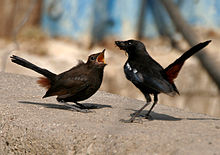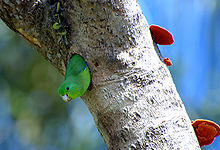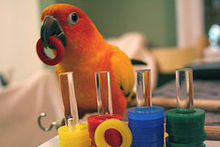The Deluge
The 26th of July 2005 , as Incharge of Core banking, was no ordinary day for me. Months of hard work was going to be put to test.. Was confident and well prepared, yet in the sub-conscious tad anxiety prevailed . Out of 3 pilot branches selected for introducing core-banking in Central bank, two other branches had failed miserably as the data to be uploaded was full of flaws.Experts from TCS along with system analysts from our Zonal Office were deputed to carryout the process of transferring data from old system to the new one after the day-end . I was to stay back late to oversee all arrangements..My house being a 20 minutes drive from my branch , my husband was to pick me up at around 9.30 p.m.
The two teams, arrived on time, just as the day-end came to a close.They were served tea and snacks. In the course of conversation, the head of the team inquired, as to who would stay over night with them from my branch. . I was in for a surprise , as nothing as such had been discussed earlier.As the staff members were about to leave, without wasting any time, I started requesting the male colleagues ,who could volunteer to stay overnight. Each one had some or the other excuse to offer.After much cajoling and requesting, two of them consented,in lieu of a complimentary off.
The team of experts sat down to work..I and the other two had nothing to do, we just had to be there .Just after an hour or so, two staff members returned. . A profound sense of respect arose in my mind for them. .,Their conscience had woken up , duty was calling , so I thought.. Sheepishly they explained that that was not the case.They had to return, as all the roads were flooded and had no option but to turn back..There was cloudburst in BKC area resultant , the Mithi river was in spate.Slowly, one by one, others too returned . As I peeped out from my branch premises I realised the gravity of the situation.. The road in front was flooded. Four wheelers, two wheelers, autos were floating on the water.A few staff members didnt return. They braved the floods and got stuck in buses, trains, and at platforms. had to go without water, food and sleep the whole night. Soon after, my husband called me up to inform that he would be unable to pick me up, as all roads leading to BKC were flooded..All the staff was forced to stay the night over. Literally , all the universe had conspired to come to my help ..
Special dinner had been arranged for the two teams already, now had to add to the order to accommodate the rest who had returned.All enjoyed a sumptuous dinner and thanked me profusely.. Later all went to sleep, making themselves, as comfortable as possible.Some slept on the office tables, some on carpets. All ladies in the GM's cabin. We were fortunate to have a nights sleep comfortably..
We woke up late in the morning,The first news was positive, the data transfer was successful. The second one not so positive. The water and electricity supply was cut off.However there was enough water left to serve our morning ablusions .All groceries and vegetables had been consumed , so the canteen organisor was unable to serve breakfast..Staying back in the branch was futile .We had to set out to reach our homes..It was a challenge though , Wading through knee deep water , we reached the overbridge near Mhada office.This was the epicentre of the deluge. As we marched forward, the water started surging. Now we were neck deep in water. The strong currents stopped us from even standing straight.We quickly made a human chain and held our hands together. ensuring we didnt get swept away.The only worry was, what if the water kept surging further.There would be meek chance of our survival..God almighty, we called out to nobody in particular, as we clasped our hands tightly and clung to each other. .We moved forward at snails pace, into the unknown territory.There was divine intervention, as the water was still neck deep, with no further surge.Slowly as we marched forward the water receded to our shoulder level..As we all sighed a breath of relief, one of my footwear got swept away by the force of the strong currents..Now I was in for double trouble.Negotiating the strong currents and facing the agony of little stones hurting my feet badly. at every step. Still we moved on forward adding to our woes, now we felt thirsty and hungry, our energies hitting the ebb..By now we had reached Santacruz, and lo ! few Samaritans from the slums lined up alongside the road were offering water bottles and packets of Parle -G biscuits. We just grabbed it from them, bringing a cheer on our otherwise battered and pale faces, giving some respite from the ordeal we had gone through.. With renewed energy and hope, we moved on....At about 1.30 in the afternoon we reached closer to my house in Vile Parle ..I called my husband and told him to keep tea ready for my colleagues, about 12/13 of them.It took us 4 1/2 hrs to reach my house , which was otherwise a 20 mins drive from my branch . Alas I reached to the comforts of my sweet home..accompanied by my colleagues..My husband served them with hot tea and poha. As all of us were hungry the tea and poha tasted so tasty as they never had .They thanked my husband from their heart ..The they set out on the journey to their respective homes.
In the last 12 hours , I had experienced all kinds of emotions.from anxiety, satisfaction,joy, fear, desperation, hope, to name it all.It also taught me that human life is so transient and that we have no control over the future..
The 26th of July 2005 , as Incharge of Core banking, was no ordinary day for me. Months of hard work was going to be put to test.. Was confident and well prepared, yet in the sub-conscious tad anxiety prevailed . Out of 3 pilot branches selected for introducing core-banking in Central bank, two other branches had failed miserably as the data to be uploaded was full of flaws.Experts from TCS along with system analysts from our Zonal Office were deputed to carryout the process of transferring data from old system to the new one after the day-end . I was to stay back late to oversee all arrangements..My house being a 20 minutes drive from my branch , my husband was to pick me up at around 9.30 p.m.
The two teams, arrived on time, just as the day-end came to a close.They were served tea and snacks. In the course of conversation, the head of the team inquired, as to who would stay over night with them from my branch. . I was in for a surprise , as nothing as such had been discussed earlier.As the staff members were about to leave, without wasting any time, I started requesting the male colleagues ,who could volunteer to stay overnight. Each one had some or the other excuse to offer.After much cajoling and requesting, two of them consented,in lieu of a complimentary off.
The team of experts sat down to work..I and the other two had nothing to do, we just had to be there .Just after an hour or so, two staff members returned. . A profound sense of respect arose in my mind for them. .,Their conscience had woken up , duty was calling , so I thought.. Sheepishly they explained that that was not the case.They had to return, as all the roads were flooded and had no option but to turn back..There was cloudburst in BKC area resultant , the Mithi river was in spate.Slowly, one by one, others too returned . As I peeped out from my branch premises I realised the gravity of the situation.. The road in front was flooded. Four wheelers, two wheelers, autos were floating on the water.A few staff members didnt return. They braved the floods and got stuck in buses, trains, and at platforms. had to go without water, food and sleep the whole night. Soon after, my husband called me up to inform that he would be unable to pick me up, as all roads leading to BKC were flooded..All the staff was forced to stay the night over. Literally , all the universe had conspired to come to my help ..
Special dinner had been arranged for the two teams already, now had to add to the order to accommodate the rest who had returned.All enjoyed a sumptuous dinner and thanked me profusely.. Later all went to sleep, making themselves, as comfortable as possible.Some slept on the office tables, some on carpets. All ladies in the GM's cabin. We were fortunate to have a nights sleep comfortably..
We woke up late in the morning,The first news was positive, the data transfer was successful. The second one not so positive. The water and electricity supply was cut off.However there was enough water left to serve our morning ablusions .All groceries and vegetables had been consumed , so the canteen organisor was unable to serve breakfast..Staying back in the branch was futile .We had to set out to reach our homes..It was a challenge though , Wading through knee deep water , we reached the overbridge near Mhada office.This was the epicentre of the deluge. As we marched forward, the water started surging. Now we were neck deep in water. The strong currents stopped us from even standing straight.We quickly made a human chain and held our hands together. ensuring we didnt get swept away.The only worry was, what if the water kept surging further.There would be meek chance of our survival..God almighty, we called out to nobody in particular, as we clasped our hands tightly and clung to each other. .We moved forward at snails pace, into the unknown territory.There was divine intervention, as the water was still neck deep, with no further surge.Slowly as we marched forward the water receded to our shoulder level..As we all sighed a breath of relief, one of my footwear got swept away by the force of the strong currents..Now I was in for double trouble.Negotiating the strong currents and facing the agony of little stones hurting my feet badly. at every step. Still we moved on forward adding to our woes, now we felt thirsty and hungry, our energies hitting the ebb..By now we had reached Santacruz, and lo ! few Samaritans from the slums lined up alongside the road were offering water bottles and packets of Parle -G biscuits. We just grabbed it from them, bringing a cheer on our otherwise battered and pale faces, giving some respite from the ordeal we had gone through.. With renewed energy and hope, we moved on....At about 1.30 in the afternoon we reached closer to my house in Vile Parle ..I called my husband and told him to keep tea ready for my colleagues, about 12/13 of them.It took us 4 1/2 hrs to reach my house , which was otherwise a 20 mins drive from my branch . Alas I reached to the comforts of my sweet home..accompanied by my colleagues..My husband served them with hot tea and poha. As all of us were hungry the tea and poha tasted so tasty as they never had .They thanked my husband from their heart ..The they set out on the journey to their respective homes.
In the last 12 hours , I had experienced all kinds of emotions.from anxiety, satisfaction,joy, fear, desperation, hope, to name it all.It also taught me that human life is so transient and that we have no control over the future..



















